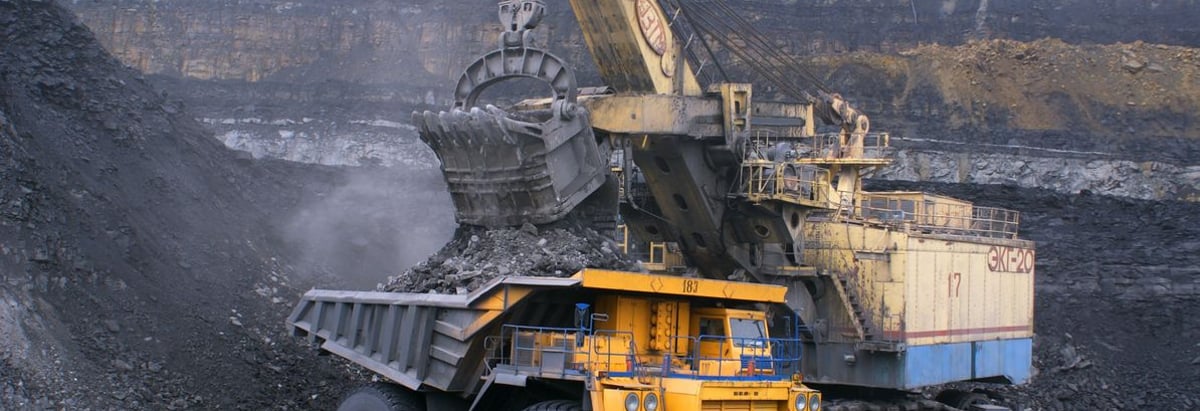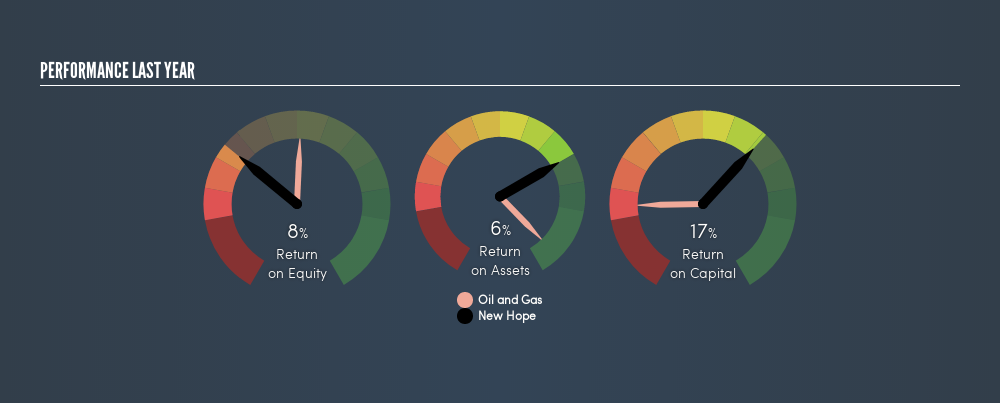- Australia
- /
- Oil and Gas
- /
- ASX:NHC
Should You Like New Hope Corporation Limited’s (ASX:NHC) High Return On Capital Employed?

Today we'll evaluate New Hope Corporation Limited (ASX:NHC) to determine whether it could have potential as an investment idea. Specifically, we'll consider its Return On Capital Employed (ROCE), since that will give us an insight into how efficiently the business can generate profits from the capital it requires.
First, we'll go over how we calculate ROCE. Then we'll compare its ROCE to similar companies. Finally, we'll look at how its current liabilities affect its ROCE.
What is Return On Capital Employed (ROCE)?
ROCE measures the amount of pre-tax profits a company can generate from the capital employed in its business. All else being equal, a better business will have a higher ROCE. Overall, it is a valuable metric that has its flaws. Author Edwin Whiting says to be careful when comparing the ROCE of different businesses, since 'No two businesses are exactly alike.'
How Do You Calculate Return On Capital Employed?
The formula for calculating the return on capital employed is:
Return on Capital Employed = Earnings Before Interest and Tax (EBIT) ÷ (Total Assets - Current Liabilities)
Or for New Hope:
0.17 = AU$360m ÷ (AU$2.3b - AU$232m) (Based on the trailing twelve months to July 2018.)
So, New Hope has an ROCE of 17%.
See our latest analysis for New Hope
Is New Hope's ROCE Good?
ROCE can be useful when making comparisons, such as between similar companies. New Hope's ROCE appears to be substantially greater than the 9.4% average in the Oil and Gas industry. We consider this a positive sign, because it suggests it uses capital more efficiently than similar companies. Separate from New Hope's performance relative to its industry, its ROCE in absolute terms looks satisfactory, and it may be worth researching in more depth.
In our analysis, New Hope's ROCE appears to be 17%, compared to 3 years ago, when its ROCE was 1.1%. This makes us think about whether the company has been reinvesting shrewdly.

When considering ROCE, bear in mind that it reflects the past and does not necessarily predict the future. ROCE can be deceptive for cyclical businesses, as returns can look incredible in boom times, and terribly low in downturns. ROCE is only a point-in-time measure. Given the industry it operates in, New Hope could be considered cyclical. Since the future is so important for investors, you should check out our freereport on analyst forecasts for New Hope.
Do New Hope's Current Liabilities Skew Its ROCE?
Liabilities, such as supplier bills and bank overdrafts, are referred to as current liabilities if they need to be paid within 12 months. Due to the way the ROCE equation works, having large bills due in the near term can make it look as though a company has less capital employed, and thus a higher ROCE than usual. To counter this, investors can check if a company has high current liabilities relative to total assets.
New Hope has total liabilities of AU$232m and total assets of AU$2.3b. As a result, its current liabilities are equal to approximately 9.9% of its total assets. Low current liabilities have only a minimal impact on New Hope's ROCE, making its decent returns more credible.
What We Can Learn From New Hope's ROCE
If New Hope can continue reinvesting in its business, it could be an attractive prospect. Of course you might be able to find a better stock than New Hope. So you may wish to see this freecollection of other companies that have grown earnings strongly.
If you are like me, then you will not want to miss this freelist of growing companies that insiders are buying.
We aim to bring you long-term focused research analysis driven by fundamental data. Note that our analysis may not factor in the latest price-sensitive company announcements or qualitative material.
If you spot an error that warrants correction, please contact the editor at editorial-team@simplywallst.com. This article by Simply Wall St is general in nature. It does not constitute a recommendation to buy or sell any stock, and does not take account of your objectives, or your financial situation. Simply Wall St has no position in the stocks mentioned. Thank you for reading.
About ASX:NHC
New Hope
Explores for, develops, produces, and processes coal, and oil and gas properties.
Flawless balance sheet, undervalued and pays a dividend.
Similar Companies
Market Insights
Community Narratives





